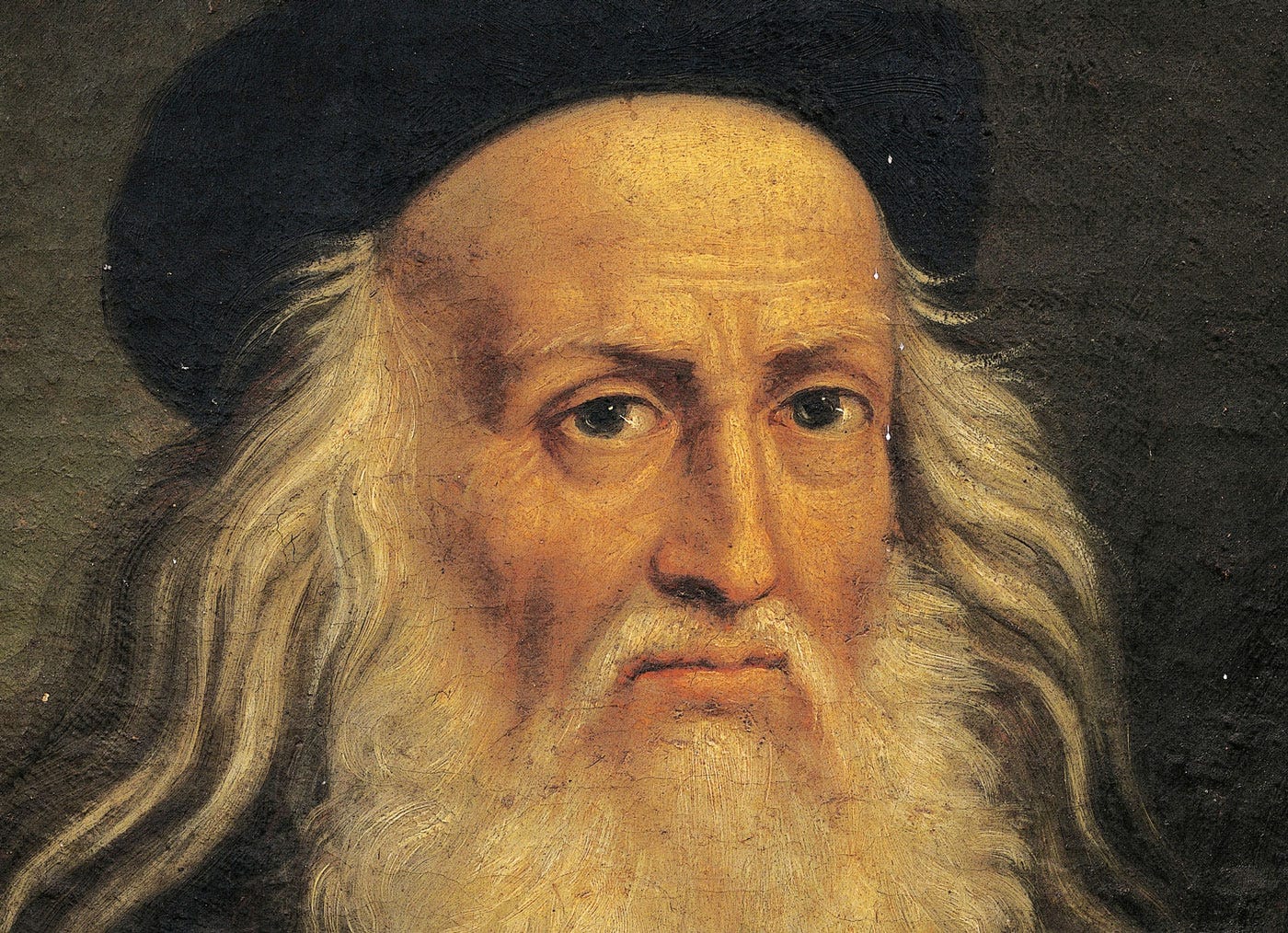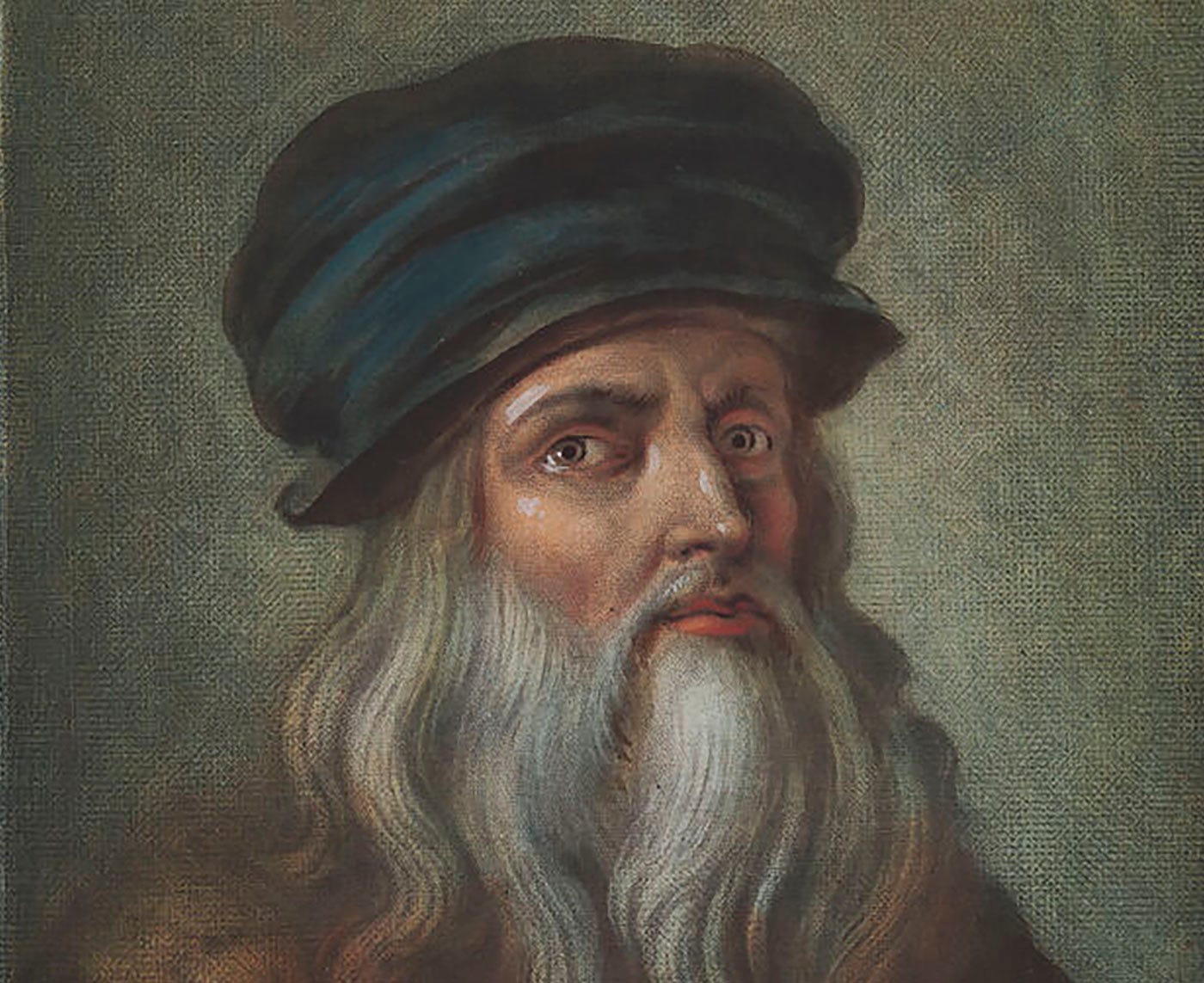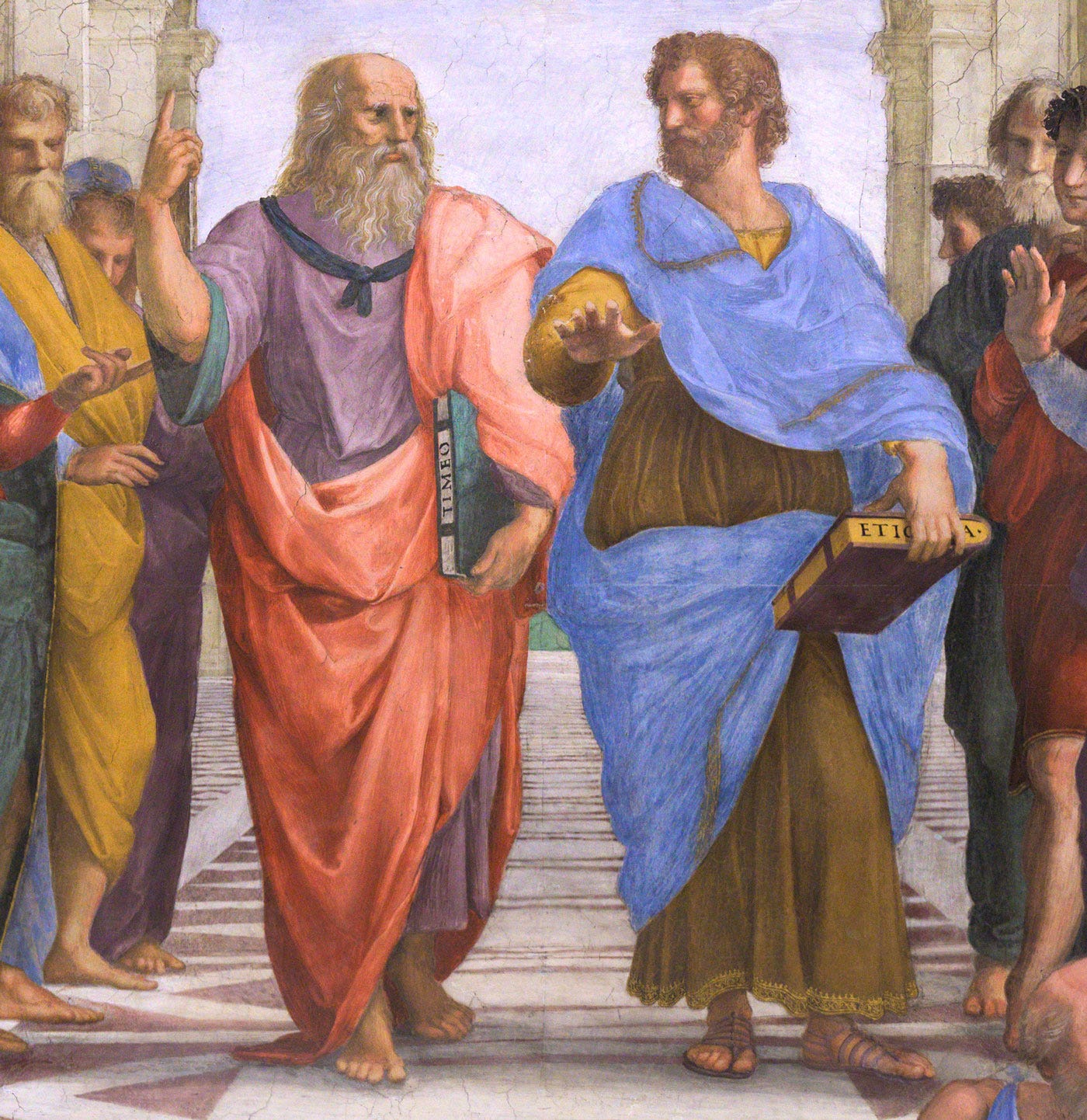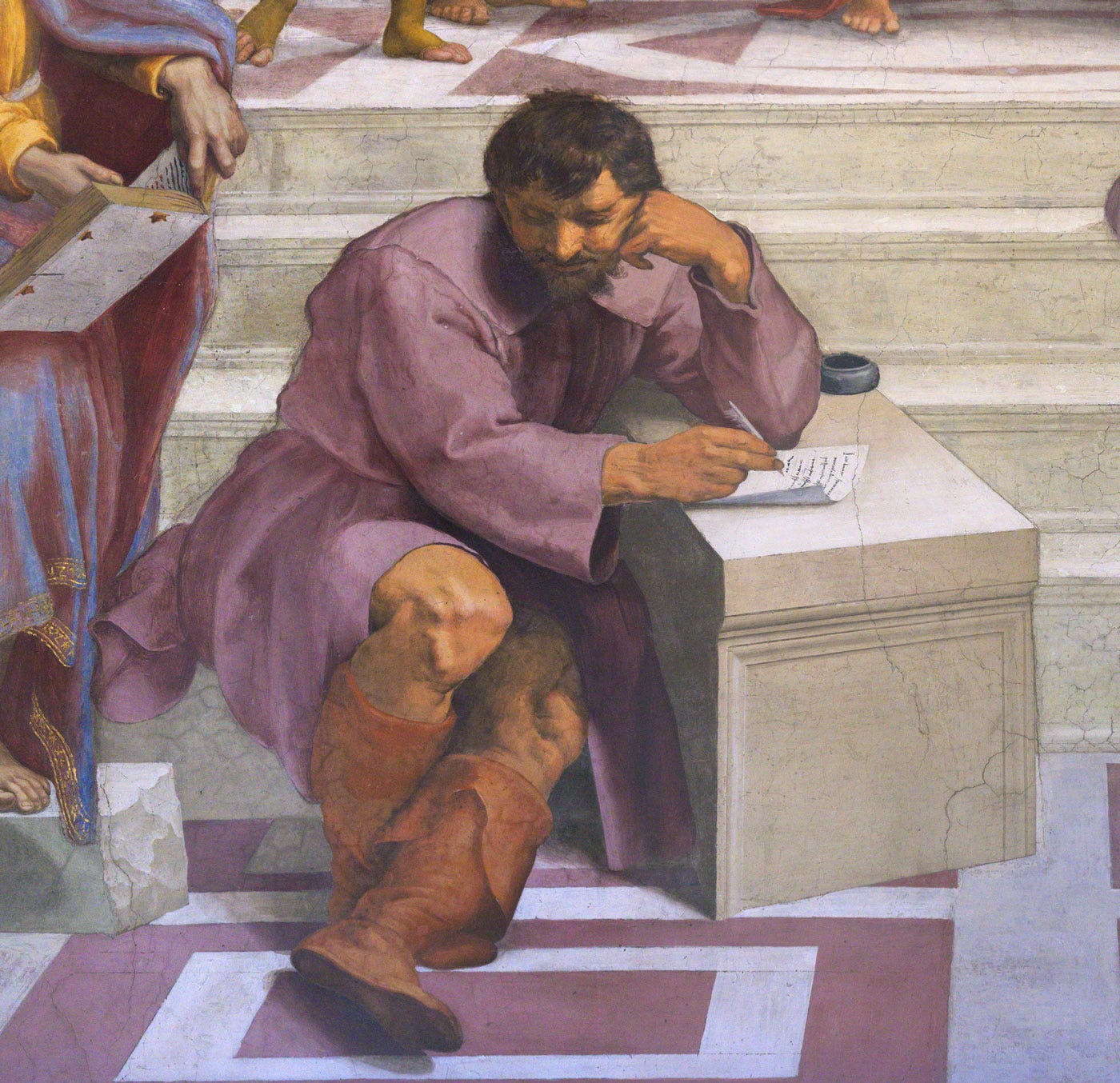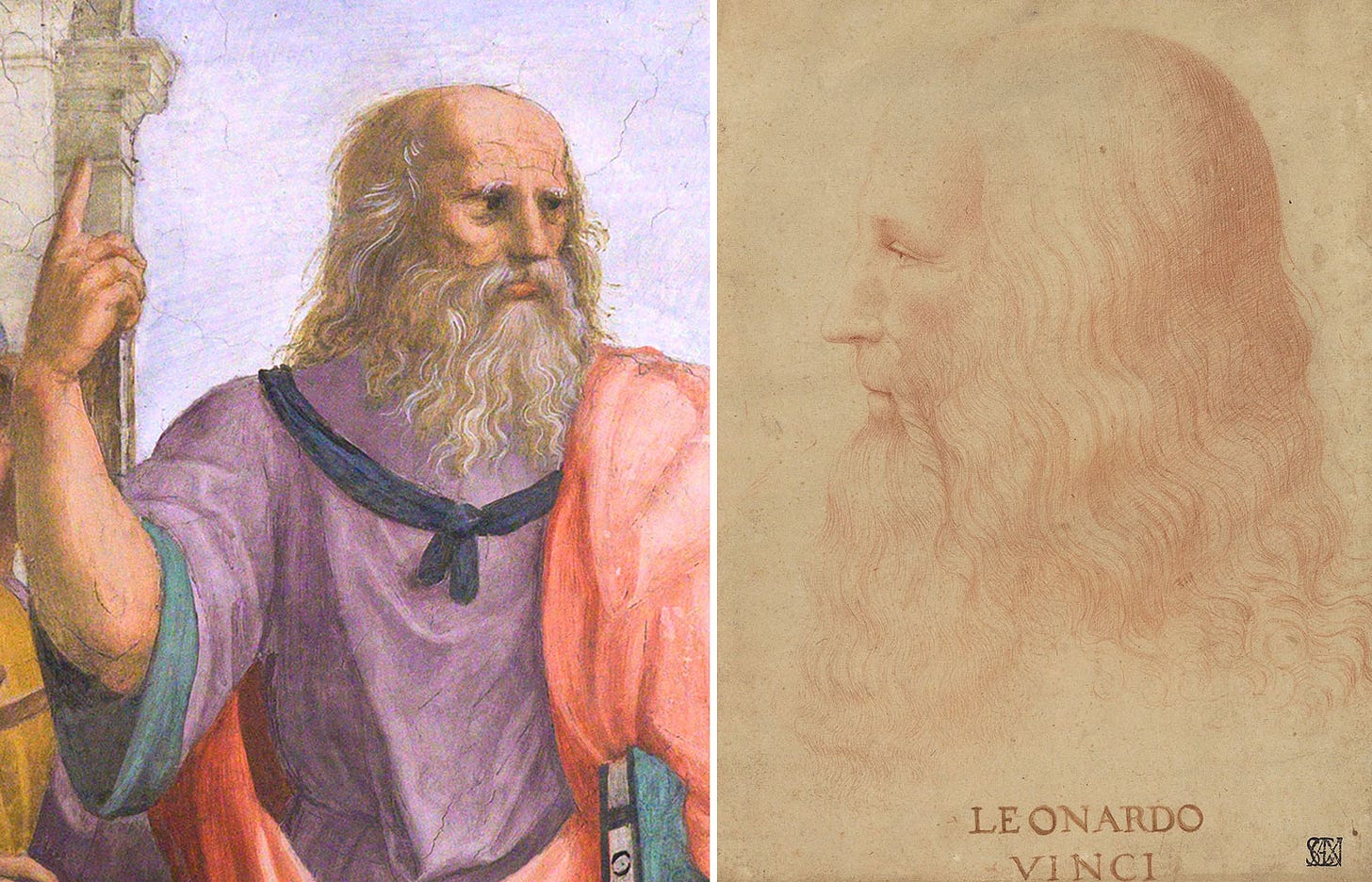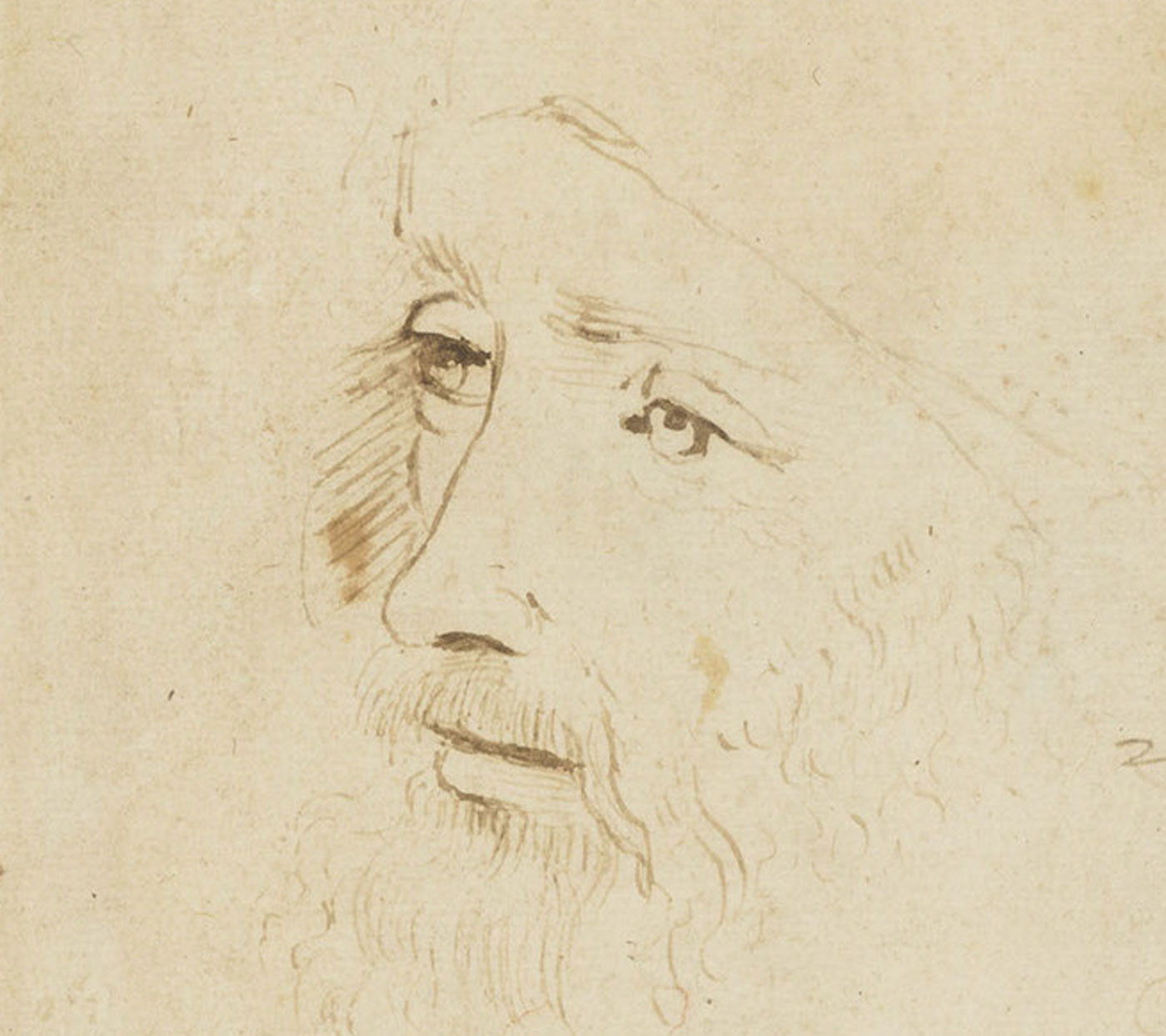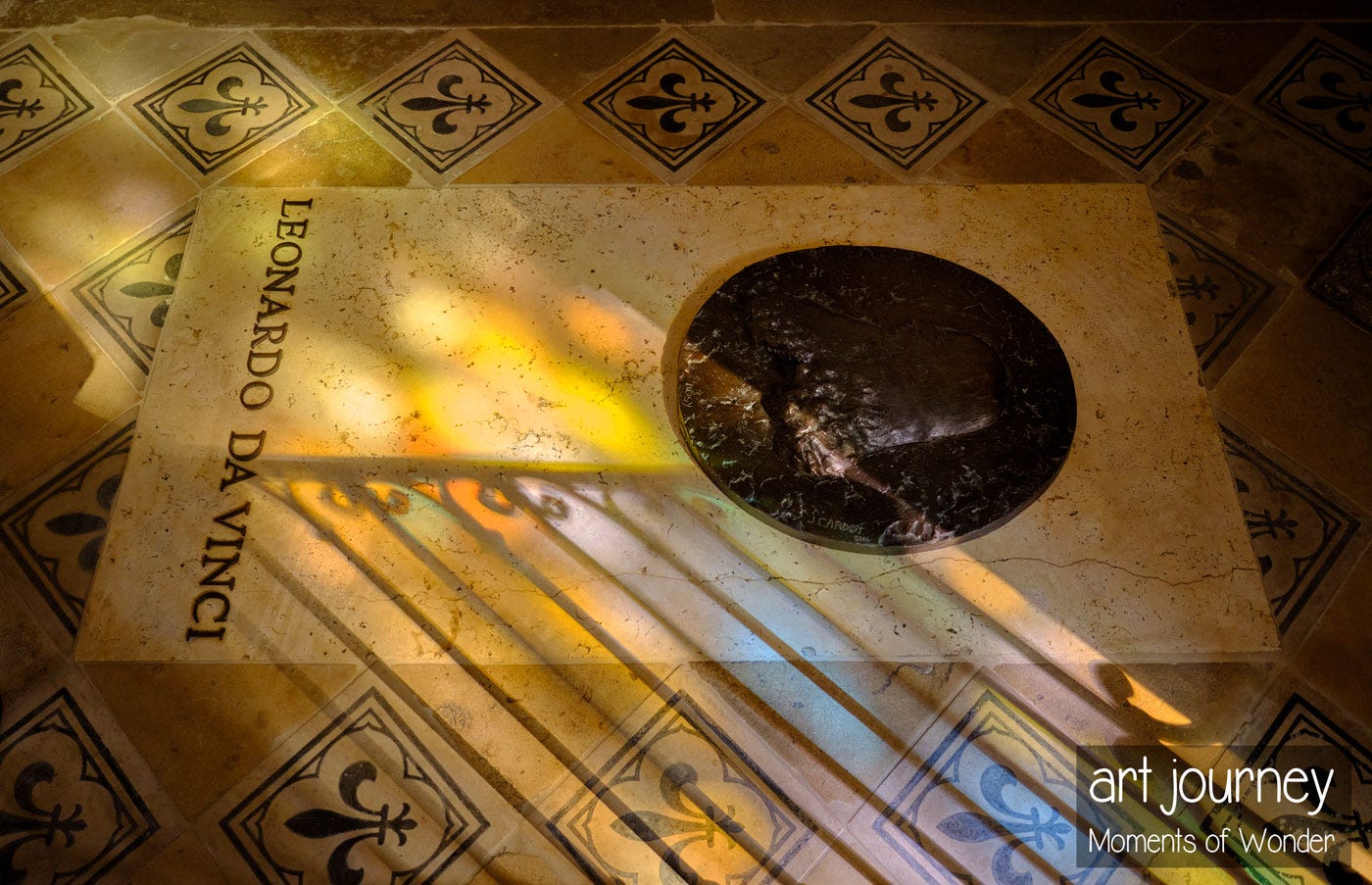Looking for Leonardo da Vinci
A detective story to find the genuine portrait of Leonardo da Vinci
Dear reader, what is your ideal dinner guest list? Think of it as a money-no-object movie. We can meet anyone we want and chat with a Pharaoh during the Pyramid Age or with Louis XIV at Versailles.
One glaring drawback to this time travel is realizing that the past was not like it is depicted in the movies.
Arriving at Versailles, not long after being dazzled by these bewigged and powdered nobles, our noses reveal the reason why they wear pungent perfume: their idea of hygiene is quite different from ours.
When we visited ancient Rome, we were rudely awakened by the lack of café terraces. There was no way to enjoy the sights of Imperial Rome hiding behind a newspaper while drinking an espresso. Two millennia ago, during a stop at Alexandria, we realized that Cleopatra wasn't quite as dashing as Elizabeth Taylor.
Yet meeting Cleopatra revealed the advantage of our time travel: we do not need to worry about the language barrier. We witnessed that Cleopatra speaks over half a dozen languages. Amazingly, we understood everything she said!
An advantage negated by a simple thing: how do we know what the people we want to meet even look like?
In this story, our dinner guest is Leonardo da Vinci.
Searching for Leonardo da Vinci's portrait
What did Leonardo da Vinci look like? We certainly are not going to open his tomb in Amboise, France, and send his skull to a forensic laboratory for facial reconstruction.
This is not that kind of detective work. Plus, if we were to succeed at meeting him, it would be awkward to explain that we interrupted his eternal rest and carried his head around like a trophy. It's not the best way to break the ice.
Instead, we employ historical advisers. A crack team of eggheads wearing capes, tightly holding onto their superpower: library cards. They are here to help us identify our potential dinner guests.
Their first reaction is to shrug and send us to museums to go and see the portraits of the people we'd like to meet. We quickly discover that it is very easy for Kings and Emperors of the last few centuries, as there are so many portraits of them.
We tell the eggheads that the number one guest we'd like to meet is Leonardo da Vinci. The eggheads tell us that walking the streets of Renaissance Florence and seeking Leonardo without knowing what he looks like is a fool’s errand.
Therefore, the question is, are there any portraits of Leonardo out there?
This is our detective story.
Coming face to face with Leonardo da Vinci
To prove to the eggheads that we arrived prepared, we scoured online for the famous portraits of Leonardo da Vinci.
The first one, above, they laugh—the second one, below, more laughter.
Then this one.
One of the experts starts to be visibly upset. He tells us:
Do you not see they all copy the same template of a beardy, old, wise guy?
None of the people who drew these things have ever seen Leonardo. These images were created in the 1800s and copied the same template, some more poorly than others.
You need to find the real deal, a painting or drawing done in Leonardo's lifetime.
Hang on a minute, aren't the eggheads working for us? Yet they send us on our way to search for the portrait ourselves. We clearly did annoy them, one of them warning:
And don't come back with another portrait of any old tramp after he's been given a bath and a cushion to wear on his head!
Phew. They want us to search for portraits from Leonardo's time. Let's start our detective work in Rome, in the Vatican.
The School of Athens by Raphael and the portrait of Leonardo
This time, we are not dealing with internet folklore but one of the most important paintings of the Renaissance, Raphael's School of Athens.
Raphael was one of the greats, along with Leonardo and Michelangelo, and these guys navigated the same circles. A past story described the titanic clash when Leonardo and Michelangelo painted in the same room.
Raphael admired Leonardo, but we do not know if they ever met. It is quite possible they did, but we do not have written evidence.
Most of what we know about Leonardo, Raphael, and Michelangelo's lives and careers comes from one book by Vasari, himself an artist.
Here is what Vasari says about the School of Athens. He notes of the figure on the right-hand corner:
The portrait of Raphael, the master of this work, who painted himself by looking in a mirror.
Vasari states there are portraits of the Duke of Mantua and the architect Bramante. He does indeed mention the philosophers:
There are Aristotle and Plato, the latter with the Timaeus in his hand, the former with the Ethics, while around them a large school of philosophers form a circle.
However, he does not say Plato is Leonardo, nor does he mention the presence of Michelangelo.
Michelangelo was painting the Sistine Chapel around the corner at the same time. Yet Vasari, who personally knew Michelangelo, does not say that this figure is Michelangelo.
Vasari never met Leonardo or Raphael, as they both died when he was a child. Yet he did recognize Raphael, but not Leonardo or Michelangelo—someone he knew very well.
While we were pondering the mystery, one of the eggheads returned. He says:
Guys, ask yourselves why the image of an old guy with a big white beard is famous for being Leonardo da Vinci. Keep looking.
Leonardo as the old wise man
The portrait above comes from Vasari's book. We are getting closer.
The painting above, which dates from the 1550s, is at the Uffizi Museum in Florence. It helpfully writes in plain letters that this is Leonardo da Vinci. It looks somewhat similar to the engraving used.
The eggheads tell us that Vasari wrote about meeting one of Leonardo's pupils. Looking at us in despair—with the attitude that says, 'maybe you should have gotten yourselves a library card'—they point us toward the solution: books.
Vasari, in his chapter about Leonardo, says the following:
Francesco Melzi, a Milanese gentleman who in Leonardo's day was a very handsome boy and much beloved by him, just as today he is a handsome and courteous old man who treasures these papers and conserves them along with a portrait of Leonardo to honour his happy memory.
Ka-ching! Along with a portrait of Leonardo.
That is our holy grail, a portrait done by Leonardo's pupil, who traveled with his master to France. It is a portrait done within touching distance of the living and breathing man.
What if it was the source of Vasari's engraved portrait of Leonardo, shown in profile? Is there a portrait of an old man by Melzi by any chance?
The potential only portraits done in Leonardo's lifetime
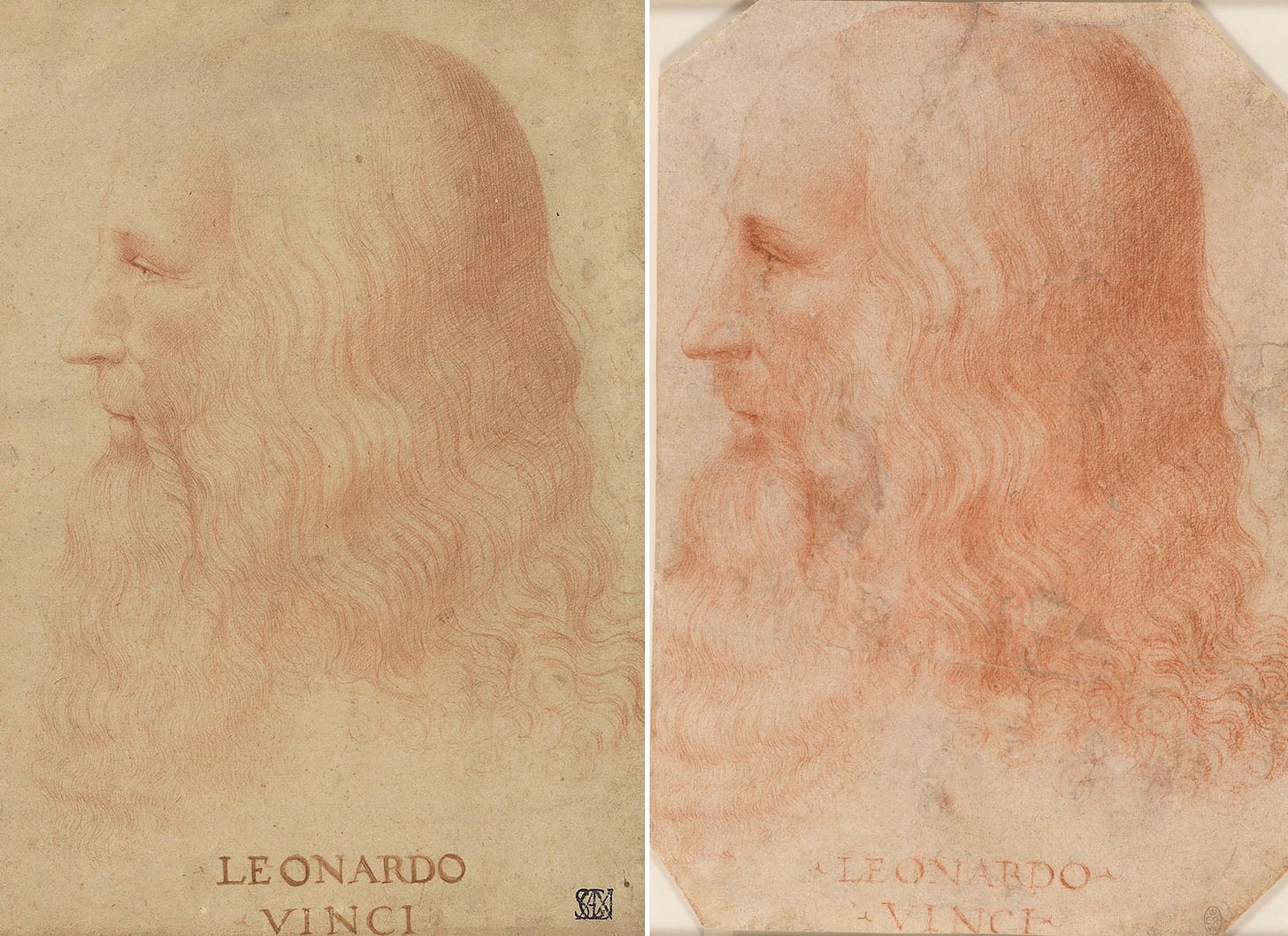
One waits for the bus for ages, and two come along. Both these sketches have the same description:
Attributed to Francesco Melzi, A portrait of Leonardo, circa 1515-1518.
And, helpfully, state 'Leonardo Vinci' on the page. One of the eggheads interrupts: don't get overexcited; if you can read it, it is not Leonardo's handwriting.
'Attributed to Francesco Melzi' means they probably are by Melzi, but there is no way to be certain. The first noticeable thing is that they are very similar and are the source of the painting at the Uffizi and the chapter of Vasari's book.
If all experts agree these were sketched around 1515 to 1518, probably by Francesco Melzi, it means as good as certain they depict Leonardo da Vinci as he was about 65 years old.
As a starting point to imagine our dinner with the genius, these are the only images that depict the real Leonardo da Vinci.
Now, you say, what about the School of Athens?
Leonardo in the School of Athens
Raphael painted Plato half a dozen years before the sketch. Is it Leonardo? The vanishing point of the painting is Leonardo's left hand, and Leonardo was left-handed.
It is quite possible that this is an homage to Leonardo. But since Vasari identifies Raphael but neither Leonardo nor Michelangelo, it can only ever be a maybe.
Leonardo's Self Portrait?
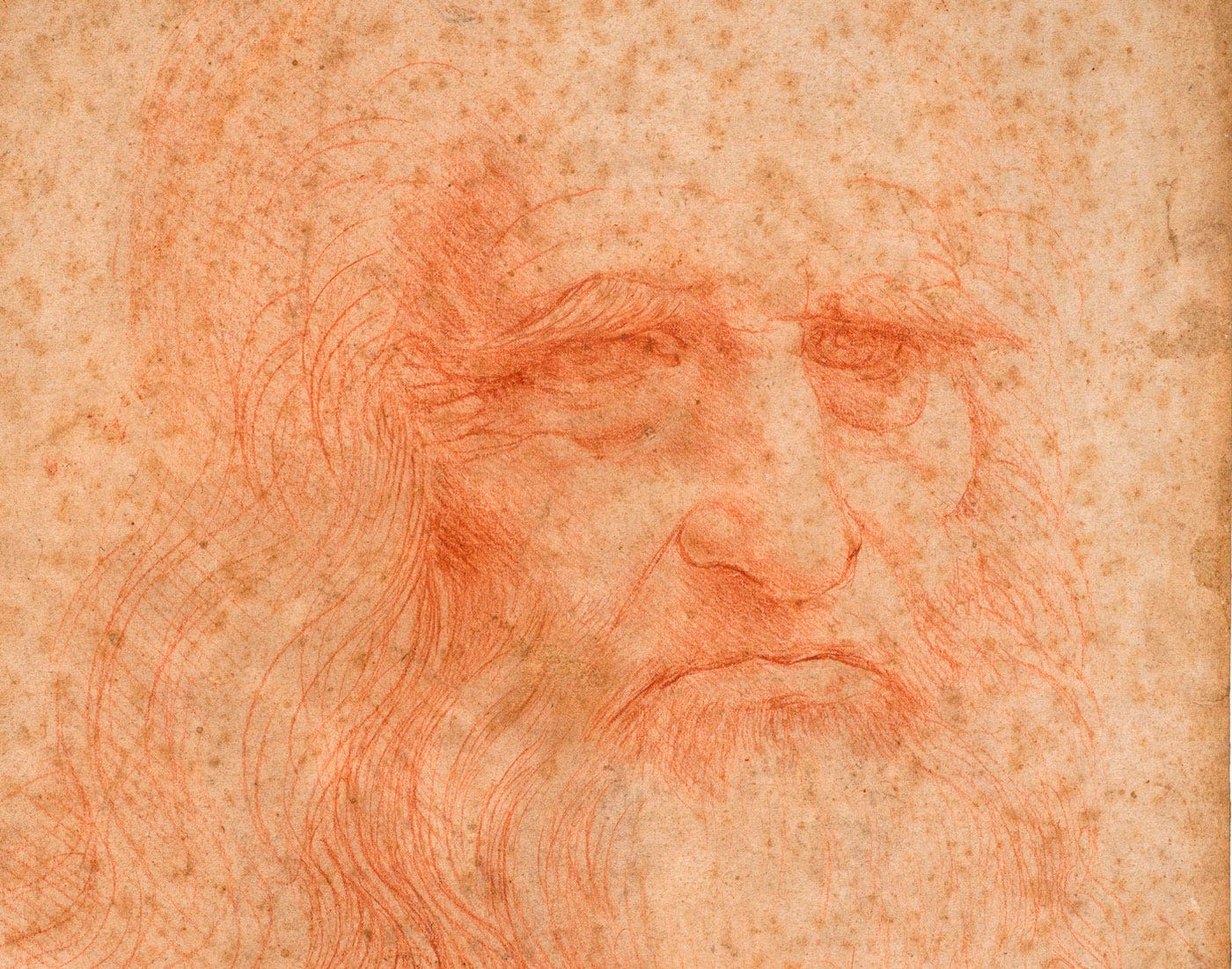
The eggheads return, warning us: this sketch only appeared in the 1800s, and it does not state it depicts Leonardo.
Compare the bushy eyebrows here to the two sketches by Melzi. The old man is looking straight at us, so it could be someone looking in the mirror and sketching what he sees. But this is a self-portrait by reputation.
Art history isn't an exact science, the eggheads remind us. One must remember there is no signature or inscription here, so it is about expertise: is it Leonardo's self-portrait?
Some experts argue that this sketch dates from the 1490s, when Leonardo was in his 40s when it would be unlikely that he looked that old.
Remember how the experts were annoyed when we showed them the tramp with a cushion on his head masquerading as Leonardo? We better watch the argument from a safe distance and say the Melzi portraits are quite certainly Leonardo, and the self-portrait, possibly.
A recent discovery may be another portrait of Leonardo. It is drawn on a Leonardo drawing—by a pupil, not Leonardo himself—and is thought to represent Leonardo.
If these two sketches are indeed Leonardo's face, drawn from life, they open a window into his soul, allowing us to peer into his eyes and have a silent conversation with the genius.
That would be a great Moment of Wonder. However, one question remains: Why is Leonardo always depicted as an elderly and wise man?
The answer comes in part II, 'Leonardo da Vinci, the man behind the icon'.
Sources
Giorgio Vasari, Vite.
https://news.artnet.com/art-world/leonardo-da-vinci-portrait-1532782







